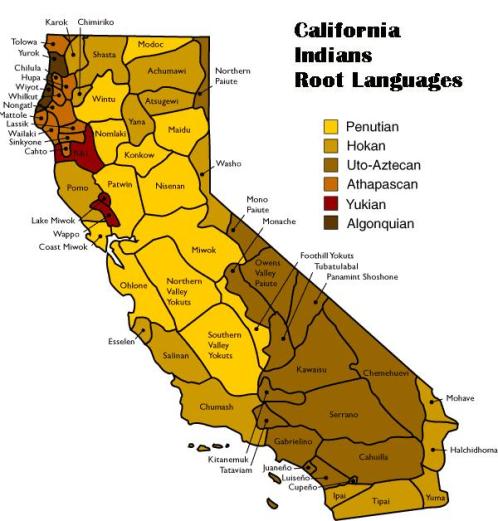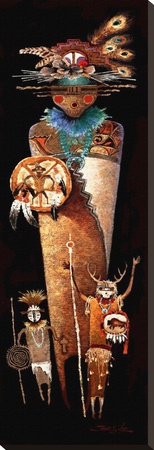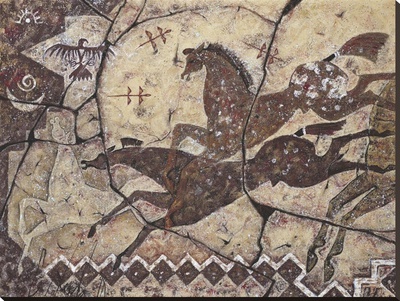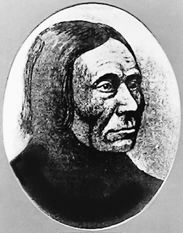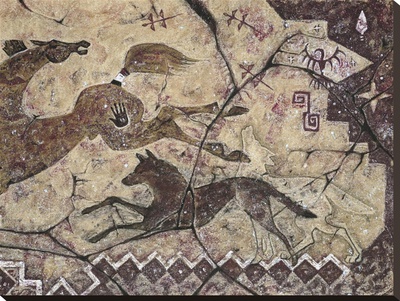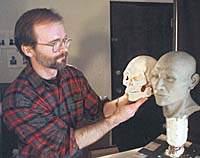These Tribes by State pages are indexes to all the native American Indian tribes in each state, whether they are federally recognized, state recognized, terminated, unrecognized, or extinct tribes. They also outline a brief history timeline of all the tribes who have lived in each state from pre-historic times to the present.
The rights and benefits associated with state recognition vary from state to state. Of the 567 federally recognized tribes, approximately 24 of them have tribal areas that span across at least two states, and approximately 5 of them have areas that span across 3 states.
Top 10 States with the largest native American populations
As of 2010, California was the state with the most individual native american and Alaskan native people (723,225), followed by Oklahoma (482,760), Arizona (353,386), Texas (315,264), New York (221,058), New Mexico (219,512), Washington (198,998), North Carolina (184,082), Florida (162,562) and Michigan (139,095).
States with no native American tribes
Virginia has no federally recognized tribes, largely due to Walter Ashby Plecker. In 1912, Plecker became the first registrar of the state’s Bureau of Vital Statistics, serving until 1946. Plecker believed that the state’s Native Americans had been “mongrelized” with its African American population. A law passed by the state’s General Assembly recognized only two races, “white” and “colored”. Plecker pressured local governments into reclassifying all Native Americans in the state as “colored,” leading to the destruction of records on the state’s Native American community. The state of Maryland also has no federally recognized indian tribes, but does have one unrecognized tribe.
5 States with the least Indian tribes
The states with the least federally recognized indian tribes, following the two states with no tribes, are West Virginia, Pennsylvania, Ohio, New Hampshire, and Kentucky.
As of May 2016, there are 567 federally recognized indian tribes in the United States. There are hundreds more indian tribes who are state recognized, petitioning for recognition, or unrecognized.
Top 5 Cities With The Most Native Americans
American cities with the largest native American and Alaska Native populations as of 2010 were New York, New York (111,749); Los Angeles, California (54,236); Phoenix, Arizona (43,724); Oklahoma City, Oklahoma(36,572); and Anchorage, Alaska(36,062).
Federally recognized Indian tribes
Federally recognized indian tribes have special immunities and privileges due to their government to government relationship with the United States, as well as the responsibilities, powers, limitations, and obligations that go along with their status as sovereign nations. Members of these tribes have dual citizenship with both the United States and their respective tribes.These tribes possess the right to form their own government, to enforce laws (both civil and criminal), to tax, to establish membership, to license and regulate activities, to zone and to exclude persons from tribal territories. Limitations on tribal powers of self-government include the same limitations applicable to states; for example, neither tribes nor states have the power to make war, engage in foreign relations, or coin money (this includes paper currency).Many Native Americans and advocates of Native American rights point out that the US Federal government’s claim to recognize the “sovereignty” of Native American peoples falls short, given that the US still wishes to govern Native American peoples and treats them as subject to US law. True respect for Native American sovereignty would require the United States federal government to deal with Native American peoples in the same manner as any other sovereign nation, handling matters related to relations with Native Americans through the Secretary of State, rather than the Bureau of Indian Affairs.The Bureau of Indian Affairs reports on its website that its “responsibility is the administration and management of 55,700,000 acres (225,000 km²) of land held in trust by the United States for American Indians, Indian tribes, and Alaska Natives.”Many Native Americans and advocates of Native American rights believe that it is condescending for such lands to be considered “held in trust” and regulated in any fashion by a foreign power.Federally recognized indian tribes are eligible to receive funding and services from the United States Bureau of Indian Affairs, commonly referred to as the B.I.A., as stipulated in their respective treaties with the United States government.Many tribes also have their own independant commercial enterprises which generate additional income for the tribe’s infrastructure, and in some cases for individual tribal members in the form of per capita payments. In recent years, tribal casinos have provided employment for tribal members and a modest profit which supports community programs. A few tribes in urban areas have become rich from their casino’s earnings, however, those tribes are the exception rather than the norm.Several tribes have had name changes in the last few years. In those instances, both the old name and the new official name are given.
Largest Native American Tribes
As of 2000, the largest tribes in the U.S. by population were (in this order) Navajo, Cherokee, Choctaw, Sioux, Chippewa, Apache, Lumbee, Blackfeet, Iroquois, and Pueblo. In 2000, eight of ten Americans with Native American ancestry were of mixed blood. It is estimated that by 2100 that figure will rise to nine out of ten.
Tribes by State
